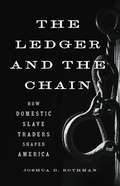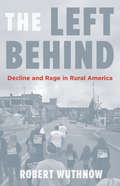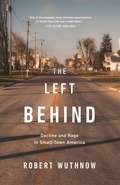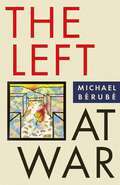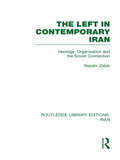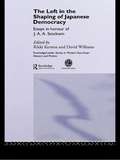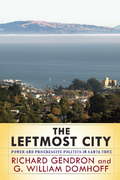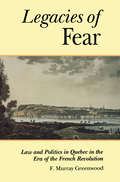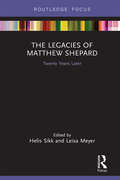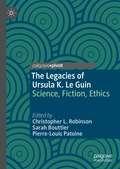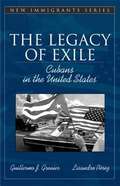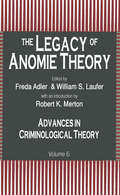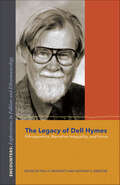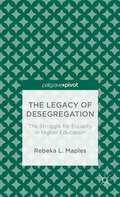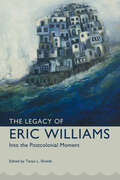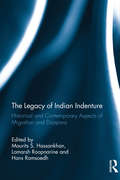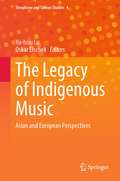- Table View
- List View
The Lede: Dispatches from a Life in the Press
by Calvin TrillinNEW YORK TIMES BESTSELLER • A fascinating portrait of journalism and the people who make it, told through pieces collected from the incomparable six-decade career of bestselling author and longtime New Yorker writer Calvin Trillin&“The Lede contains profiles . . . that are acknowledged classics of the form and will be studied until A.I. makes hash out of all of us.&”—Dwight Garner, The New York TimesI&’ve been writing about the press almost as long as I&’ve been in the game. At some point, it occurred to me that disparate pieces from various places in various styles amounted to a picture from multiple angles of what the press has been like over the years since I became a practitioner and an observer.Calvin Trillin has reported serious pieces across America for The New Yorker, covered the civil rights movement in the South for Time, and written comic verse for The Nation. But one of his favorite subjects over the years—a superb fit for his unique combination of reportage and humor—has been his own professional environment: the American press.In The Lede, Trillin gathers his incisive, often hilarious writing on reporting, reporters, and their world. There are pieces on a legendary crime reporter in Miami and on an erudite film critic in Dallas who once a week transformed himself from a connoisseur of the French nouvelle vague into a fan of movies like Mother Riley Meets the Vampire. Trillin writes about the paucity of gossip columns in Russia, the icebreaker he'd use if he met one of his subjects socially (e.g.: &“You must be wondering why I referred to you in Time as a dork robot&”), and the origins of a publication called Beautiful Spot: A Magazine of Parking.Uniting all of this is Trillin&’s signature combination of empathy, humor, and graceful prose. The Lede is an invaluable portrait of one our fundamental American institutions from a master journalist.
The Ledger and the Chain: How Domestic Slave Traders Shaped America
by Joshua D. RothmanAn award-winning historian reveals the harrowing forgotten story of America's internal slave trade—and its role in the making of America.Slave traders are peripheral figures in most histories of American slavery. But these men—who trafficked and sold over half a million enslaved people from the Upper South to the Deep South—were essential to slavery's expansion and fueled the growth and prosperity of the United States.In The Ledger and the Chain, acclaimed historian Joshua D. Rothman recounts the shocking story of the domestic slave trade by tracing the lives and careers of Isaac Franklin, John Armfield, and Rice Ballard, who built the largest and most powerful slave-trading operation in American history. Far from social outcasts, they were rich and widely respected businessmen, and their company sat at the center of capital flows connecting southern fields to northeastern banks. Bringing together entrepreneurial ambition and remorseless violence toward enslaved people, domestic slave traders produced an atrocity that forever transformed the nation.
The Left Behind: Decline and Rage in Rural America
by Robert WuthnowHow a fraying social fabric is fueling the outrage of rural AmericansWhat is fueling rural America's outrage toward the federal government? Why did rural Americans vote overwhelmingly for Donald Trump? And, beyond economic and demographic decline, is there a more nuanced explanation for the growing rural-urban divide? Drawing on more than a decade of research and hundreds of interviews, Robert Wuthnow brings us into America's small towns, farms, and rural communities to paint a rich portrait of the moral order--the interactions, loyalties, obligations, and identities—underpinning this critical segment of the nation. Wuthnow demonstrates that to truly understand rural Americans' anger, their culture must be explored more fully. We hear from farmers who want government out of their business, factory workers who believe in working hard to support their families, town managers who find the federal government unresponsive to their communities' needs, and clergy who say the moral climate is being undermined. Wuthnow argues that rural America's fury stems less from specific economic concerns than from the perception that Washington is distant from and yet threatening to the social fabric of small towns. Rural dwellers are especially troubled by Washington's seeming lack of empathy for such small-town norms as personal responsibility, frugality, cooperation, and common sense. Wuthnow also shows that while these communities may not be as discriminatory as critics claim, racism and misogyny remain embedded in rural patterns of life.Moving beyond simplistic depictions of the residents of America's heartland, The Left Behind offers a clearer picture of how this important population will influence the nation's political future.
The Left Behind: Decline and Rage in Small-Town America
by Robert WuthnowHow a fraying social fabric is fueling the outrage of rural AmericansWhat is fueling rural America’s outrage toward the federal government? Why did rural Americans vote overwhelmingly for Donald Trump? And is there a more nuanced explanation for the growing rural-urban divide? Drawing on more than a decade of research and hundreds of interviews, Robert Wuthnow brings us into America’s small towns, farms, and rural communities to paint a rich portrait of the moral order—the interactions, loyalties, obligations, and identities—underpinning this critical segment of the nation. Wuthnow demonstrates that to truly understand rural Americans’ anger, their culture must be explored more fully, and he shows that rural America’s fury stems less from economic concerns than from the perception that Washington is distant from and yet threatening to the social fabric of small towns. Moving beyond simplistic depictions of America’s heartland, The Left Behind offers a clearer picture of how this important population will influence the nation’s political future.
The Left at War (Cultural Front)
by Michael BérubéThe terrorist attacks of 9/11 and Bush’s belligerent response fractured the American left—partly by putting pressure on little-noticed fissures that had appeared a decade earlier.In a masterful survey of the post-9/11 landscape, renowned scholar Michael Bérubé revisits and reinterprets the major intellectual debates and key players of the last two decades, covering the terrain of left debates in the United States over foreign policy from the Balkans to 9/11 to Iraq, and over domestic policy from the culture wars of the 1990s to the question of what (if anything) is the matter with Kansas.The Left at War brings the history of cultural studies to bear on the present crisis—a history now trivialized to the point at which few left intellectuals have any sense that merely "cultural" studies could have something substantial to offer to the world of international relations, debates over sovereignty and humanitarian intervention, matters of war and peace. The surprising results of Bérubé’s arguments reveal an American left that is overly fond of a form of "countercultural" politics in which popular success is understood as a sign of political failure and political marginality is understood as a sign of moral virtue. The Left at War insists that, in contrast to American countercultural traditions, the geopolitical history of cultural studies has much to teach us about internationalism—for "in order to think globally, we need to think culturally, and in order to understand cultural conflict, we need to think globally." At a time when America finds itself at a critical crossroads, The Left at War is an indispensable guide to the divisions that have created a left at war with itself.
The Left in Contemporary Iran: Ideology, Organisation And The Soviet Connection (Routledge Library Editions: Iran)
by Sepehr ZabirThis book examines the structure and ideology of all the main leftist groups in Iran. It considers their role in the Revolution, and analyses their relations with Khomeini and his colleagues. It also explains why the majority of the leftist organisations had defected from the Islamic regime by the summer of 1981. A second important theme of the book is the way in which the Soviet Union responded to the treatment of the Left by the Islamic government. Based on extensive analysis of original source material in Farsi and other languages and numerous interviews with leftist leaders and participants, the book provides a detailed portrait of the Left in contemporary Iran.
The Left in the Shaping of Japanese Democracy: Essays in Honour of J.A.A. Stockwin (Routledge/Leiden Series in Modern East Asian Politics, History and Media #Vol. 2)
by David Williams Rikki KerstenLeftist thought and activism stands as a defining force in the articulation of political culture and policy in modern Japan. Operating from the periphery of formal political power for the most part, the Japanese Left has had an impact that extends far beyond its limited success at the ballot box. The essays that compose this Oxford Festschrift range over a wide set of themes including the tragic careers of two prewar left-wing martyrs (Goto-Jones); Hisashi Asô, the great Socialist apostate (Kersten); the Left’s evasion of constitutional sovereignty (Williams); the rise and fall of Nikkyô-sô (Aspinall); the Left’s impact on privatization and bureaucratic reform (Nakano); the demise of parliamentary Socialism (Hyde); the Left’s recent embrace of free market principles (Schoppa); critical Japan studies and American empire since ‘9.11’ (Williams); and history’s final judgment on the fate of this great political movement (Banno).
The Leftmost City
by G. William Domhoff Richard GendronAlmost all US cities are controlled by real estate and development interests, but Santa Cruz, California, is a deviant case. An unusual coalition of socialist-feminists, environmentalists, social-welfare liberals, and neighborhood activists has stopped every growth project proposed by landowners and developers since 1969, and controlled the city council since 1981. Even after a 1989 earthquake forced the city to rebuild its entire downtown, the progressive elected officials prevailed over developers and landowners. Drawing on hundreds of primary documents, as well as original, previously unpublished interviews, The Leftmost City utilizes an extended case study of Santa Cruz to critique three major theories of urban power: Marxism, public-choice theory, and regime theory. Santa Cruz is presented within the context of other progressive attempts to shape city government, and the authors' findings support growth-coalition theory, which stresses the conflict between real estate interests and neighborhoods as the fundamental axis of urban politics. The authors conclude their analysis by applying insights gleaned from Santa Cruz to progressive movements nationwide, offering a template for progressive coalitions to effectively organize to achieve political power.
The Leftmost City
by G. William Domhoff Richard GendronAlmost all US cities are controlled by real estate and development interests, but Santa Cruz, California, is a deviant case. An unusual coalition of socialist-feminists, environmentalists, social-welfare liberals, and neighborhood activists has stopped every growth project proposed by landowners and developers since 1969, and controlled the city council since 1981. Even after a 1989 earthquake forced the city to rebuild its entire downtown, the progressive elected officials prevailed over developers and landowners. Drawing on hundreds of primary documents, as well as original, previously unpublished interviews, The Leftmost City utilizes an extended case study of Santa Cruz to critique three major theories of urban power: Marxism, public-choice theory, and regime theory. Santa Cruz is presented within the context of other progressive attempts to shape city government, and the authors' findings support growth-coalition theory, which stresses the conflict between real estate interests and neighborhoods as the fundamental axis of urban politics. The authors conclude their analysis by applying insights gleaned from Santa Cruz to progressive movements nationwide, offering a template for progressive coalitions to effectively organize to achieve political power.
The Leftmost City: Power and Progressive Politics in Santa Cruz
by G. William Domhoff Richard GendronAlmost all US cities are controlled by real estate and development interests, but Santa Cruz, California, is a deviant case. An unusual coalition of socialist-feminists, environmentalists, social-welfare liberals, and neighborhood activists has stopped every growth project proposed by landowners and developers since 1969, and controlled the city council since 1981. Even after a 1989 earthquake forced the city to rebuild its entire downtown, the progressive elected officials prevailed over developers and landowners. Drawing on hundreds of primary documents, as well as original, previously unpublished interviews,The Leftmost Cityutilizes an extended case study of Santa Cruz to critique three major theories of urban power: Marxism, public-choice theory, and regime theory. Santa Cruz is presented within the context of other progressive attempts to shape city government, and the authors' findings support growth-coalition theory, which stresses the conflict between real estate interests and neighborhoods as the fundamental axis of urban politics. The authors conclude their analysis by applying insights gleaned from Santa Cruz to progressive movements nationwide, offering a template for progressive coalitions to effectively organize to achieve political power.
The Leftmost City: Power and Progressive Politics in Santa Cruz
by Richard GendronAlmost all US cities are controlled by real estate and development interests, but Santa Cruz, California, is a deviant case. An unusual coalition of socialist-feminists, environmentalists, social-welfare liberals, and neighborhood activists has stopped every growth project proposed by landowners and developers since 1969, and controlled the city council since 1981. Even after a 1989 earthquake forced the city to rebuild its entire downtown, the progressive elected officials prevailed over developers and landowners. Drawing on hundreds of primary documents, as well as original, previously unpublished interviews, The Leftmost City utilizes an extended case study of Santa Cruz to critique three major theories of urban power: Marxism, public-choice theory, and regime theory. Santa Cruz is presented within the context of other progressive attempts to shape city government, and the authors? findings support growth-coalition theory, which stresses the conflict between real estate interests and neighborhoods as the fundamental axis of urban politics. The authors conclude their analysis by applying insights gleaned from Santa Cruz to progressive movements nationwide, offering a template for progressive coalitions to effectively organize to achieve political power.
The Legacies of Fear
by F. Murray GreenwoodMany people assume that a French-English cleavage has always existed and historians have been uncertain as to just how it unfolded. This book provides the answer. Greenwood re-creates a Quebec in which trust between French and English Canadians was an early casualty of the execution of Louis XVI and the descent of the French Revolution through terror into war. Fearing invasion, the English community, through the law officers of the crown, drafted draconian legislation and established an efficient counter-intelligence service. Lower Canada in these years was a hotbed of spies and counter-intelligence, highlighted by the trial for high treason of an American undercover agent for revolutionary France. Placing the legal history of Quebec in the foreground of these dangerous and dramatic events, Greenwood reveals this period as a turning point that altered not only French-English relations but Canada's legal and constitutional inheritance.While the focus is on legal and political history, the narrative also details intellectual, military, social, and economic developments. The author pursues many dynamic themes of the period including the riots among working people in the 1790s; the differences in judicial behaviour when security matters were at stake; the setting up of the first formal counter-intelligence service, and issues related to the suspension of habeas corpus.Murray Greenwood is one of Canada's finest legal historians. In this work his wide perspective, supported by extensive documentation, brings new evidence and insight to a formative and somewhat neglected period in Canada's history.
The Legacies of Matthew Shepard: Twenty Years Later (Focus on Global Gender and Sexuality)
by Helis Sikk Leisa MeyerThis edited collection explores the deeper contexts and consequences surrounding the murder of Matthew Shepard. This young gay man was brutally beaten and left tied to a fence on a chill Wyoming night in October 1998. Found the next morning by two cyclists, he was transported to a hospital in Fort Collins, Colorado where he died five days later. His murder was one of the most publicized and for some, most vividly remembered, instances of hate crime related violence based on sexual orientation. Twenty years after his death, Matthew Shepard’s story is at a critical turning point: memories of his murder and its meanings can either fade into the past or be reinvigorated to make up part of more meaningful investigations into LGBTQ and modern U.S. history. The multidisciplinary contributors to this book blend personal narrative with more conventional academic approaches to offer a 20-year retrospective that re-examines the subject of Shepard’s murder, whilst also bringing to light questions of historical memory, rurality, race, and public policy. Each of the disciplines and genres included contributes unique understandings of the murder and responses to it that cannot be articulated solely through traditional academic writing. This collection then not only tells the story of Matthew Shepard in the context of 2018, but also provides a compelling view of how and through which means American culture communicates painful histories of violence, bias, and death.
The Legacies of The Basin of Mexico (G - Reference,information And Interdisciplinary Subjects Ser.)
by Christopher T. Morehart Carlos E. CordovaThis volume celebrates the continuing impact of the most notable contributions from The Basin of Mexico: The Ecological Processes in the Evolution of a Civilization by William T. Sanders, Jeffrey R. Parsons, and Robert S. Santley. In 1979, this influential work synthesized the results of the Basin of Mexico survey projects and follow-up excavations at several sites, while providing theoretical and methodological lines of research in central Mexico and generally in Mesoamerica. More than four decades after that book’s publication, the fourteen contributions in this volume review and analyze its theoretical and methodological influence in light of recent research across disciplines. Among a spectrum of authors representing several generations are those who participated directly in the Basin of Mexico surveys—including the late Jeffrey R. Parsons—as well as those who have been actively working on recent projects in the basin and neighboring regions. Providing a broad and multidisciplinary perspective of the present and future state of research in the area, The Legacies of The Basin of Mexico will be of interest to Mesoamerican and Latin American archaeologists as well as geographers, geologists, historians, and specialists in the study of past environments. Contributors: Guillermo Acosta Ochoa, Aleksander Borejsza, Destiny Crider, Charles Frederick, Raúl García-Chávez, Larry Gorenflo, Angela Huster, Georgina Ibarra Arzave, Charles Kolb, Frank Lehmkuhl, Abigail Meza Peñaloza, Emily McClung de Tapia, John K. Millhauser, Deborah Nichols, Jeffrey R. Parsons, Serafin Sánchez Pérez, Philipp Schulte, Sergey Sedov, Elizabeth Solleiro Rebolledo, Daisy Valera Fenández, Federico Zertuche
The Legacies of Ursula K. Le Guin: Science, Fiction, Ethics (Palgrave Studies in Science and Popular Culture)
by Christopher L. Robinson Sarah Bouttier Pierre-Louis PatoineThe Legacies of Ursula K. Le Guin explores how Le Guin’s fiction and essays have built a speculative ethical practice engaging indigenous knowledge and feminism, while crafting utopias in which human and other-than-human life forms enter into new relations. Her work also delineates new ways of making sense of the “science” of science fiction. The authors of this collection provide up-to-date discussions of well-known works as well as more experimental writings. Written in an accessible style, Legacies will appeal to any readers interested in literature, science fiction and fantasy, as well as specialists of science and technology studies, philosophy of science, ethics, gender studies, indigenous studies and posthumanism.
The Legacies of a Hawaiian Generation: From Territorial Subject to American Citizen
by Judith SchachterThrough the voices and perspectives of the members of an extended Hawaiian family, or `ohana, this book tells the story of North American imperialism in Hawai`i from the Great Depression to the new millennium. The family members offer their versions of being "Native Hawaiian" in an American state, detailing the ways in which US laws, policies, and institutions made, and continue to make, an impact on their daily lives. The book traces the ways that Hawaiian values adapted to changing conditions under a Territorial regime and then after statehood. These conditions involved claims for land for Native Hawaiian Homesteads, education in American public schools, military service, and participation in the Hawaiian cultural renaissance. Based on fieldwork observations, kitchen table conversations, and talk-stories, or mo`olelo, this book is a unique blend of biography, history, and anthropological analysis.
The Legacy Of Exile: Cubans In The United States (New Immigrants)
by Nancy Foner Lisandro Pérez Guillermo J. GrenierThe Legacy of Exile , the latest entry in the New Immigrants Series, deals with one of the most visible and political of all U.S. immigrant groups–Cubans. <p><p> This is a group that was welcomed to the United States, that transformed a major U.S. metropolitan area, that exerts a powerful–and controversial–impact on U.S. foreign policy, and that has achieved, in a relatively short time, economic success in this country. The theme of the book is that the Cuban presence has been shaped by the experience of exile. <p> In understanding the case of the Cuban immigration to the United States, students will gain insight into the dynamics of U.S. immigration policy; the differences between immigrants and exiles; interethnic relations among newcomers and established residents; and the economic development of immigrant communities. Cuban immigrants provide a surprising and compelling case study of the relatively successful adaptation of an immigrant community. <p> The book presents the long tradition of Cuban immigration to the United States; the elements of Cuban culture which have emerged and reinforced this tradition of migration; the impact that Cubans have had on the Miami area; as well as the changes within the community as Cubans develop into a well established minority group within the United States.
The Legacy of Anomie Theory (Advances In Criminological Theory Ser. #6)
by Robert K. Merton Freda Adler William S. LauferThis sixth volume of Advances in Criminological Theory is testimony to a resurgent interest in anomie-strain theory, which began in the mid- 1980s and continues unabated. Contributors focus on the new body of empirical research and theorizing that has been added to the anomie tradition that extends from Durkheim to Merton. The first section is a major, 75-page statement by Robert K. Merton, examining the development of the anomie-and-opportunity-structure paradigm and its significance to criminology., The Legacy of Anomie Theoy assesses the theory's continuing usefulness, explains the relevance of Merton's concept of goals/means disparity as a psychological mechanism in the explanation of delinquency, and compares strain theory with social control theory. A macrosociological theoretical formulation is used to explain the association between societal development and crime rates. In other chapters, anomie is used to explain white-collar crime and to explore the symbiotic relationship between Chinese gangs and adult criminal organizations within the cultural, economic, and political context of the American-Chinese community.
The Legacy of Dell Hymes: Ethnopoetics, Narrative Inequality, and Voice (Encounters: Explorations In Folklore And Ethnomusicology Ser.)
by Anthony K. Webster Paul V. KroskrityThe accomplishments and enduring influence of renowned anthropologist Dell Hymes are showcased in these essays by leading practitioners in the field. Hymes (1927–2009) is arguably best known for his pioneering work in ethnopoetics, a studied approach to Native verbal art that elucidates cultural significance and aesthetic form. As these essays amply demonstrate, nearly six decades later ethnopoetics and Hymes's focus on narrative inequality and voice provide a still valuable critical lens for current research in anthropology and folklore. Through ethnopoetics, so much can be understood in diverse cultural settings and situations: gleaning the voices of individual Koryak storytellers and aesthetic sensibilities from century-old wax cylinder recordings; understanding the similarities and differences between Apache life stories told 58 years apart; how Navajo punning and an expressive device illuminate the work of a Navajo poet; decolonizing Western Mono and Yokuts stories by bringing to the surface the performances behind the texts written down by scholars long ago; and keenly appreciating the potency of language revitalization projects among First Nations communities in the Yukon and northwestern California. Fascinating and topical, these essays not only honor a legacy but also point the way forward.
The Legacy of Desegregation: The Struggle for Equality in Higher Education
by Rebeka L. MaplesThe book analyzes the struggle of African Americans to gain access and equity in higher education in the United States. It chronicles some of the history prior to court ordered segregation and traces the mandate to desegregate by following the Adams v. Richardson (1973) case, which ordered the dismantling of dual systems of higher education.
The Legacy of Dutch Brazil
by Michiel Van GroesenThis book argues that Dutch Brazil (1624 54) is an integral part of Atlantic history and that it made an impact well beyond colonial and national narratives in the Netherlands and Brazil. In doing so, this book proposes a radical shift in interpretation. The Dutch Atlantic is widely perceived as an incongruity among more durable European empires, whereas Brazil occupies an exceptional place in the history of Latin America, which leads to a view of Dutch Brazil as self-contained and historically isolated. The Legacy of Dutch Brazil shows that repercussions of the Dutch infiltration in the Southern Hemisphere resonated across the Atlantic Basin and remained long after the fall of the colony. By examining its regional, national, and cosmopolitan legacies, thirteen authors trace the memories and mythologies of Dutch Brazil from the colonial period up until the present day and engage in broader debates on geopolitical and cultural changes at the crossroads of Atlantic and Latin American studies. "
The Legacy of Eric Williams: Into the Postcolonial Moment (Caribbean Studies Series)
by Tanya L. ShieldsThe Legacy of Eric Williams provides an indispensable and significant understanding of Eric Williams's contributions to the now independent nation of Trinidad and Tobago and his impact on the broader international understanding of the Caribbean. This book stands out because of its simultaneous investigation into Eric Williams as a scholar/intellectual, a political leader, and, most importantly, a key postcolonial figure. Most previous studies have treated these as separate arenas.The essays here confront the relevance of postcolonialism in understanding Williams's role both in post-independence Trinidad and Tobago and in newer understandings of Caribbean globalization. The volume divides into three broad sections--"Becoming Eric Williams," "Political Williams," and "Textual Williams." "Becoming Eric Williams" provides background on Williams and the Caribbean's ontological quest, addressing what it means to be West Indian and Caribbean. "Political Williams" engages with his policies and their consequences, describing the impact of Williams's political policies on several areas: integration, color stratification, and labor and public sector reform. Williams's far-reaching political influence in these aspects cements his legacy as one of the main public intellectuals responsible for creating the modern Caribbean. "Textual Williams" examines his scholarly contributions from a more traditional academic perspective. These sections allow for a comprehensive understanding of Williams as a man, a scholar, and a politician.
The Legacy of Indian Indenture: Historical and Contemporary Aspects of Migration and Diaspora
by Lomarsh Roopnarine Maurits S. Hassankhan Hans RamsoedhThis book is the second publication originating from the conference Legacy of Slavery and Indentured Labour: Past, present and future, which was organised in June 2013, by the Institute of Graduate Studies and Research (IGSR), Anton de Kom University of Suriname. The articles are grouped in four sections. Section one concentrates on indenture in the Caribbean and the IndianOcean and includes four diverse, but inter-related chapters and contributions. These reveal some newly- emerging, impressive trends in the study of indenture, essentially departing from the over used neo-slave scholarship. Not only are new concepts explored and analysed, but this section also raises unavoidable questions on previously published studies on indenture. Section two shows that there are many areas that need to be re-examined and explored in the study of indenture. The chapters in this section re-examine personal narratives of indentured labourers, the continuous connection between the Caribbean and India as well as education and Christianization of Indians in Trinidad. The result is impressive. The analysis of personal accounts or voices of indentured servants themselves certainly provides an alternative perception to archival information written mostly by the organizers of indenture. Section three in this volume focuses on ethnicity and politics. In segmented societies like Suriname, Guyana and Trinidad & Tobago institutional politics and political mobilization are mainly ethnically based. In Suriname, Trinidad & Tobago and Guyana this has led to ethnic and political tensions. These themes are explored in these three articles. Section four addresses health, medicine and spirituality – themes which, until recently, have received little attention. The first article examines the historical impact of colonialism through indentureship, on the health, health alternatives and health preferences of Indo-Trinidadians, from the period between 1845 to the present. The second examines the use of protective talismans by Indian indentured labourers and their descendants. Little or no psychological research has been done on the spiritual world of Indian immigrants, enslaved Africans and their respective descendants, with special reference to the use of talismans.
The Legacy of Indigenous Music: Asian and European Perspectives (Sinophone and Taiwan Studies #4)
by Yu-Hsiu Lu Oskar ElschekThis book shares essential insights into how indigenous music has been inherited and preserved under the influence of the dominant mainstream culture in Asia and Europe. It illustrates possible ways of handing down indigenous music in countries and regions with different levels of acceptance toward indigeneity, including Taiwan, the Philippines, Malaysia, Turkey, the Czech Republic, Slovakia, the Near and Middle East, Caucasus Mountains, etc. Given its focus, the book benefits researchers who are interested in the status quo of indigenous music around the globe. The macro- and micro-perspectives used to explore related issues, problems, and concerns also benefit those interested in regional ethnomusicology.
The Legacy of M. N. Srinivas: His Contribution to Sociology and Social Anthropology in India
by A. M. ShahM. N. Srinivas is acclaimed as a doyen of modern sociology and social anthropology in India. In this book, A. M. Shah, a distinguished Indian sociologist and a close associate of Srinivas’s, reflects on his legacy as a scholar, teacher, and institution builder. The book is a collection of Shah’s five chapters on and an interview with Srinivas, with a comprehensive introduction. He narrates Srinivas’s life and work in different phases; discusses his theoretical ideas, especially functionalism, compared with Max Weber’s ideas; deliberates on his concept of Sanskritisation and its contemporary relevance; and reflects on his role in the history of sociology and social anthropology in India. In the interview, Srinivas responds to a large number of questions from the style of writing to the dynamics of politics. It shows that while his scholarship was firmly rooted in India, it was sensitive to global ideas and institutions. This book will be an essential read for scholars and researchers in sociology, social anthropology, history, and political science. The general reader interested in these subjects will also find it useful.

